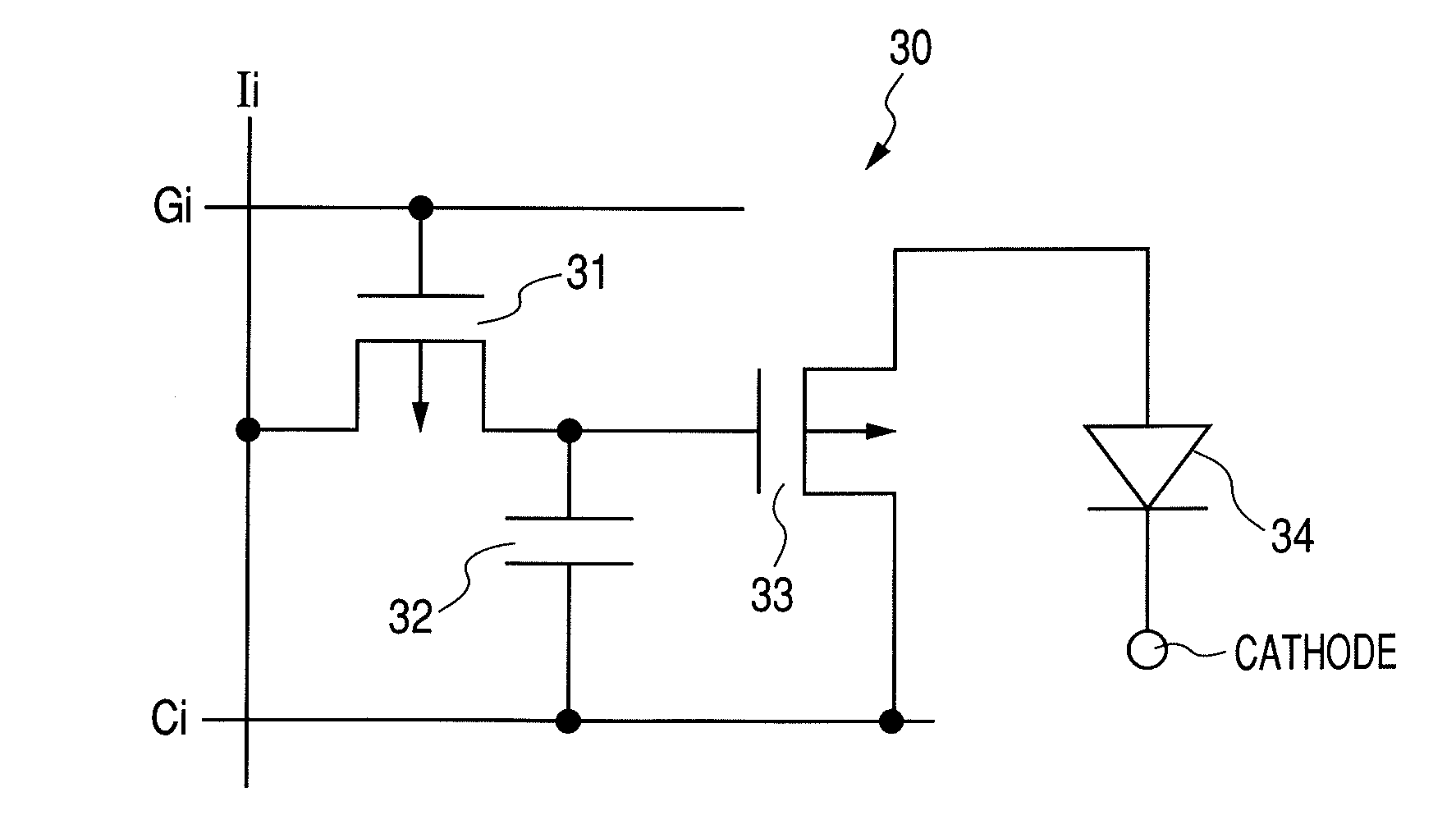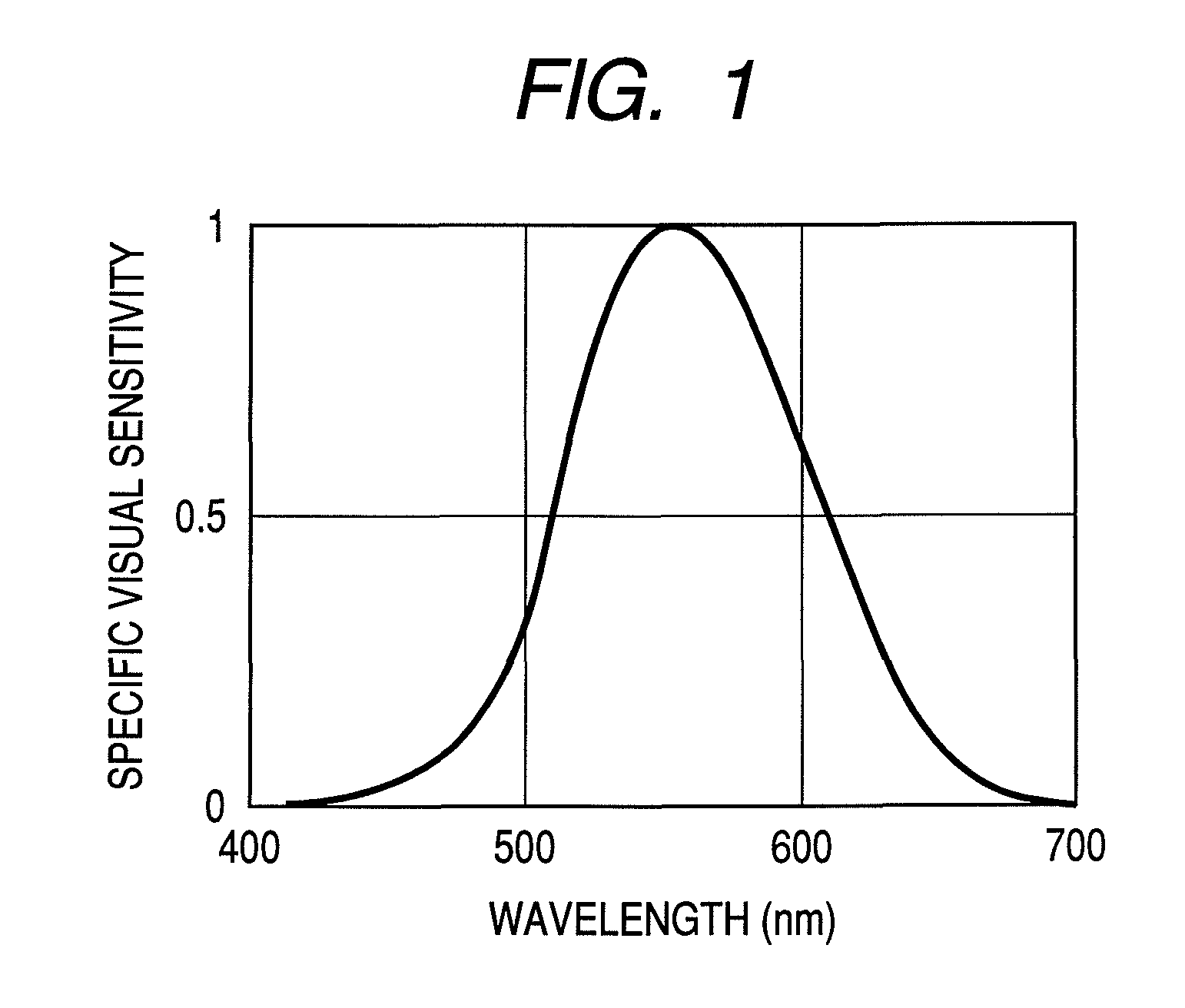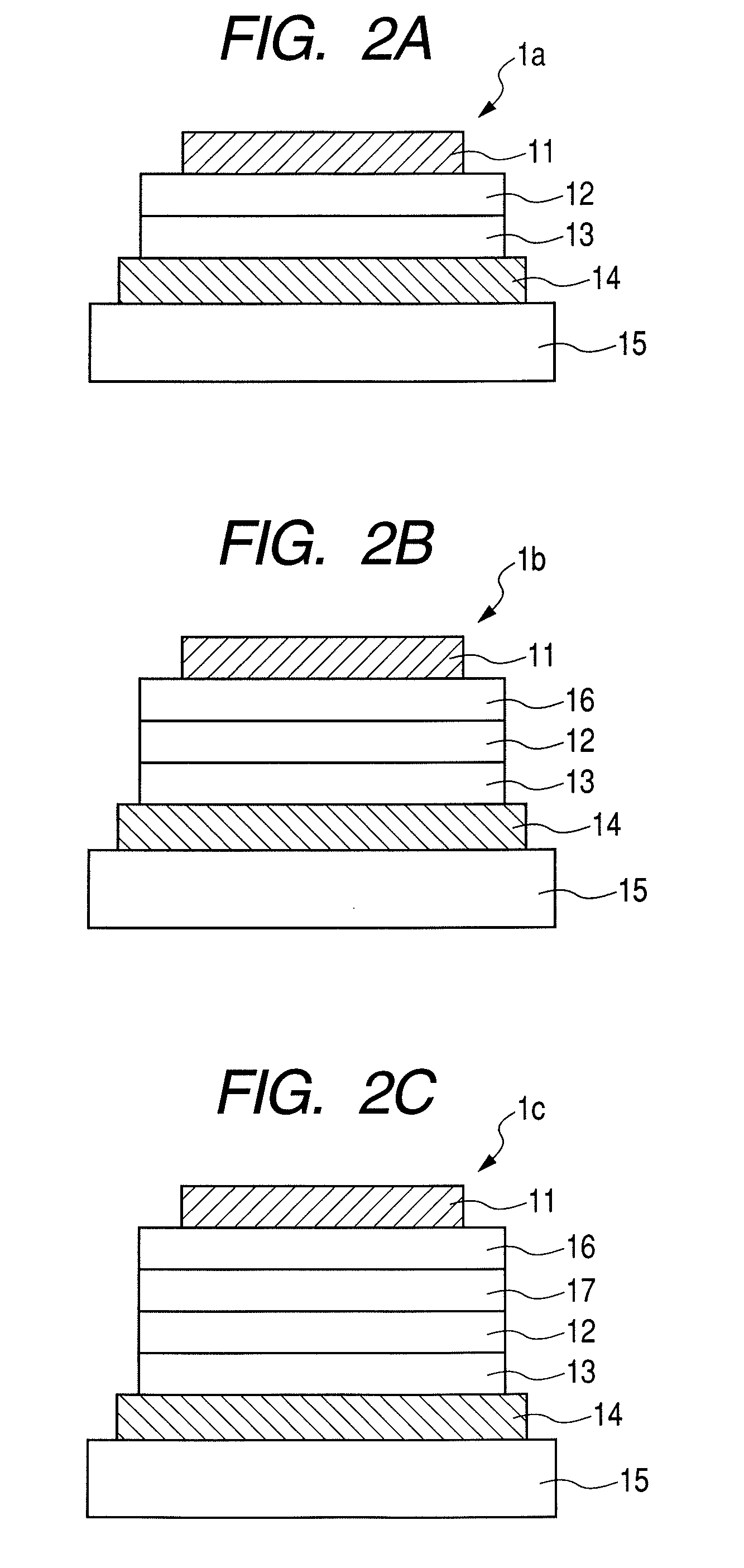Phosphorescent material, and organic electroluminescent device and image display apparatus using same
a technology of electroluminescent devices and phosphorescent materials, which is applied in the direction of discharge tube luminescnet screens, natural mineral layered products, etc., can solve the problems of inability to say that the problems of durability have been satisfactorily solved, and achieve high efficiency and high durability
- Summary
- Abstract
- Description
- Claims
- Application Information
AI Technical Summary
Benefits of technology
Problems solved by technology
Method used
Image
Examples
example 1
Synthesis of Compound (I)
[0118]
[0119](1) The following reagents and solvents were placed in a 200 ml round bottom flask.
[0120]
Compound (A1):1.0g (3.4 mmol)Compound (A2):0.56g (3.4 mmol)Tetrakistriphenylphosphine palladium:0.1g (0.08 mmol)2M-sodium carbonate aqueous solution:20mlEthanol:20mlToluene:80ml
[0121]Next, the reaction solution was stirred under nitrogen flow under heating and reflux for 6 hours. After the completion of the reaction, the reaction solution was poured into 100 ml of cold water, and then, 50 ml of toluene was added thereto to perform separation, whereby an organic layer was separated from a water layer. After that, the organic layer was concentrated under a reduced pressure. Next, the obtained solid substance was purified with silica gel column chromatography (developing solvent: toluene), and then recrystallized from hexane, whereby 1.1 g (yield 92%) of a white crystal of an intermediate compound (A3) was obtained.
[0122](2) The following reagents and solvents w...
example 2
Synthesis of Compound (II)
[0131]
[0132]The following reagents and solvent were placed in a 100 ml three-neck flask.
[0133]
Compound (I):0.5g (0.47 mmol)Intermediate compound (A3):0.54g (1.4 mmol)Glycerol:20ml
[0134]Next, the reaction solution was stirred under nitrogen flow at a temperature at or near 180° C. for 8 hours. After the completion of the reaction, the reaction solution was cooled to room temperature, and thereafter, 100 ml of water was poured. Next, the deposited precipitate was filtered off and washed with water, and dried under a reduced pressure at 100° C. for 5 hours. The precipitate was purified with silica gel column chromatography using chloroform as a developing solvent, whereby 0.3 g (yield 48%) of a red powder of compound (II) was obtained.
[0135]By MALDI-TOF MS, 1042 that was M+ of the compound was confirmed. Further, the phosphorescent spectrum λmax in a toluene solution of the compound (II) was 607 nm.
[0136]Further, the quantum efficiency of the compound (II) was...
example 3
Synthesis of Compound (III)
[0137]
[0138](1) The following reagents and solvent were placed in a 200 ml round bottom flask. Incidentally, a compound (A7) was synthesized by the synthesis method described in Journal of Organic Chemistry, 65(22), 7703-7706 (2000).
[0139]
Compound (A7):1.0g (2.2 mmol)Compound (A8):0.36g (2.2 mmol)Tetrakistriphenylphosphine palladium:0.1g (0.08 mmol)2M-sodium carbonate aqueous solution:20mlEthanol:20mlToluene:80ml
[0140]Next, the reaction solution was stirred under nitrogen flow under heating and reflux for 6 hours. After the completion of the reaction, the reaction solution was poured into 100 ml of cold water, and then, 50 ml of toluene was added thereto to perform separation, whereby an organic layer was separated from a water layer. After that, the organic layer was concentrated under a reduced pressure. Next, the obtained solid substance was purified with silica gel column chromatography (developing solvent: toluene), and then recrystallized from hexane...
PUM
| Property | Measurement | Unit |
|---|---|---|
| red emission wavelength | aaaaa | aaaaa |
| emission wavelength | aaaaa | aaaaa |
| emission wavelength | aaaaa | aaaaa |
Abstract
Description
Claims
Application Information
 Login to View More
Login to View More - R&D
- Intellectual Property
- Life Sciences
- Materials
- Tech Scout
- Unparalleled Data Quality
- Higher Quality Content
- 60% Fewer Hallucinations
Browse by: Latest US Patents, China's latest patents, Technical Efficacy Thesaurus, Application Domain, Technology Topic, Popular Technical Reports.
© 2025 PatSnap. All rights reserved.Legal|Privacy policy|Modern Slavery Act Transparency Statement|Sitemap|About US| Contact US: help@patsnap.com



